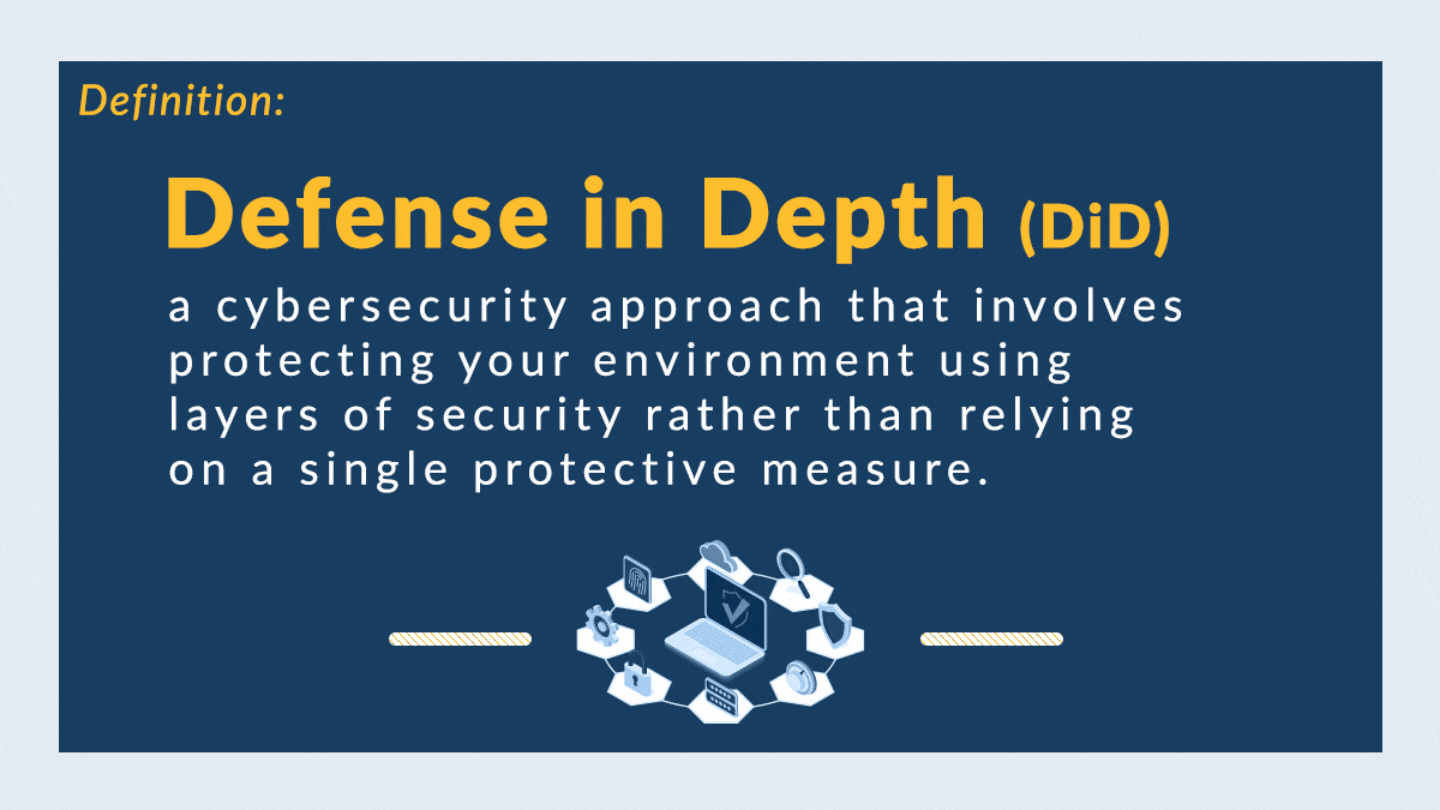Outsmart Hackers With This Cybersecurity Approach
The current threat landscape is rapidly advancing, with cybercriminals constantly upgrading their toolset to break through security defenses. If you want to outsmart malicious hackers, it’s time to start thinking like them. Fend them off with various layered defense methods. This is what Defense in Depth (DiD) is all about.
The National Institute of Standards and Technology (NIST) defines DiD as “The application of multiple countermeasures in a layered or stepwise manner to achieve security objectives. The methodology involves layering heterogeneous security technologies in the common attack vectors to ensure that attacks missed by one technology are caught by another.”
In simple terms, DiD is a cybersecurity approach in which multiple defensive methods are layered to protect a business. Since no individual security measure can guarantee protection against every attack, combining several layers of security can be more effective.
Outsmart Hackers With This Cybersecurity Approach
Essential Elements of Defense in Depth (DID)
This layering approach was first conceived by the National Security Agency (NSA) and is inspired by a military tactic of the same name. In the military, layers of defense help buy time. But in IT, this approach is intended to prevent an incident altogether.
It’s important to differentiate DiD from another cybersecurity concept called layered security. While layered security uses different security products to address a particular security aspect, such as email filtering, DiD is more comprehensive and includes multiple security measures to address distinct threats related to the entire IT infrastructure.
An MSP, like Omega Computer Services, can help you implement all the elements of an effective DiD strategy to minimize the chances of threats seeping in through the cracks. These elements include:
Firewalls
A firewall is a security system comprised of hardware or software that can protect your network by filtering out unnecessary traffic and blocking unauthorized access to your data.
Intrusion Prevention and Detection Systems
Intrusion prevention and detection systems scan the network to look for anything out of place. If a threatening activity is detected, it will alert the stakeholders and block attacks.
Endpoint Detection and Response (EDR)
Endpoint Detection and Response (EDR) solutions operate by constantly monitoring endpoints to find suspicious or malicious behavior in real-time.
Network Segmentation
Once you divide your business’ network into smaller units, you can monitor data traffic between segments and safeguard segments from one another.
The Principle of Least Privilege (PoLP)
The principle of least privilege (PoLP) is a cybersecurity concept in which a user is only granted the minimum levels of access/permissions essential to perform their task.
Strong Passwords
Poor password hygiene, including the use of default passwords like “1234” or “admin,” can put your business at risk. Equally risky is the habit of using the same passwords for multiple accounts. To protect your accounts from being hacked, it’s essential to have strong passwords and an added layer of protection by using practices such as multifactor authentication (MFA).
Patch Management
Security gaps left unattended due to poor patch management can make your business vulnerable to cyberattacks. As soon as a new patch gets delivered, deploy it right away to prevent exploitation.
Security Control Areas
DiD checks many of the boxes for staying compliant with evolving laws and regulations. The essential elements show up as current or future requirements in the three security control areas:
Administrative Controls - The policies and procedures of a business fall under administrative controls. These controls ensure that appropriate guidance is available and that security policies are followed. Examples include hiring practices or employee onboarding protocols, data processing and management procedures, information security policies, vendor risk management and third-party risk management frameworks, information risk management strategies, etc.
Technical Controls - Hardware or software intended to protect systems and resources fall under technical controls. Examples of technical controls are firewalls, configuration management, disk/data encryption, identity authentication (IAM), vulnerability scanners, patch management, virtual private networks (VPNs), intrusion detection systems (IDS), security awareness training, etc.
Physical Controls - Anything aimed at physically limiting or preventing access to IT systems falls under physical controls. Examples are fences, keycards/badges, CCTV systems, locker rooms, etc.
The principle of least privilege (PoLP) could arguably be part of any or all three areas. It is also one of the hardest pills to swallow as a business owner or leader in your organization. It’s convenient to have higher levels of access just in case, but it is also SO dangerous and creates unnecessary risk. We could write a whole separate blog about that (and we just might).
“In the very near future, cybersecurity exercises are going to be absolutely expected of all companies by regulators.”
Your Next Steps
While DiD is critical to protecting your business against evolving cyber threats, it’s an undertaking that requires time, extensive knowledge, and experience. Partnering with an MSP, like Omega Computer Services, can simplify the process, reduce stress, and minimize opportunities for error.
We’re here to help. Contact us to take the first step toward making your organization more secure.






